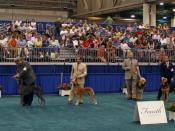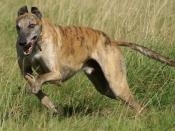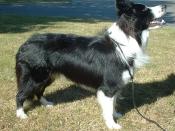All dogs, impure as well as pure-bred, and several wild cousins such as wolves and foxes, are one family. Each breed was created by human beings, using selective breeding to get desired qualities. The result is an almost unbelievable diversity of purebred dogs that will, when bred to others of their breed, produce their own kind. A "breed standard" is a written description of a given breed. This description uses words to define what a breed should look like. A standard exists for each of the breeds recognized by The American Kennel Club (AKC) and is the standard each breed is mentally measured against. Throughout the world there are several hundred distinctive breeds of purebred dogs, not all of which are AKC recognized breeds. There are currently 147 breeds officially recognized by the AKC. Each breed is assigned to one of the following seven groups, based on the uses for which the breeds were originally developed.
These seven groups include: Group 1 -- Sporting Dogs; Group 2 -- Working Dogs; Group 3 -- Terriers; Group 4 -- Toy Breeds; Group 5 -- Non-Sporting Breeds; Group 6 -- Herding; and Group 7 -- Hounds.
The Sporting dogs are naturally active and alert, likable, and well-rounded companions. Members of this Group include pointers, retrievers, setters and spaniels. Remarkable for their instincts in water and woods, many of these breeds actively participate in hunting and other field activities. Potential owners of Sporting dogs need to realize that most require regular, invigorating exercise. Dogs of the Working Group, of which there are 21, were bred to perform such jobs as guarding property, pulling sleds and performing water rescues. They have been an invaluable asset to human being throughout the ages. The Doberman Pinscher, Siberian Husky and Great Dane are included in this Group. Quick...



Okay Essay
This paper provides basic information. More detail would make this paper more interesting, but overall okay.
0 out of 0 people found this comment useful.